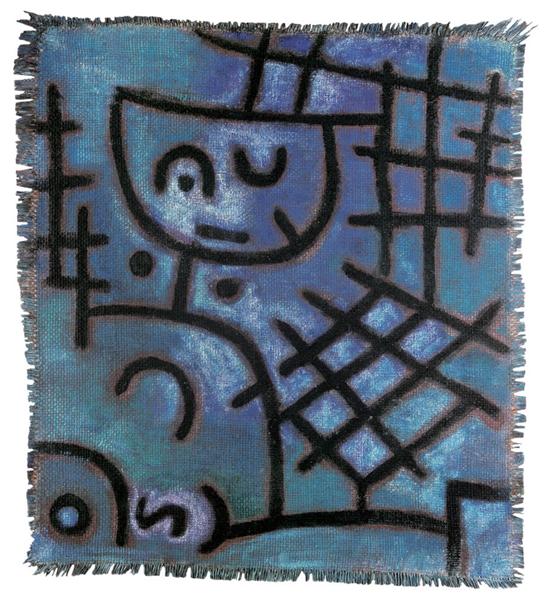Description
Paul Klee's "captive" painting, created in 1940, is a work that synthesizes the concerns and distinctive character of the Swiss artist, known for his ability to merge the dreamlike with the symbolic. This work, carried out in a moment of intense world and personal agitation for Klee, reflects its deep interest in human psychology and its relationship with space. Klee was immersed in his own exile, and this context resonates potently in the work, by evoking issues of vulnerability and confinement.
The composition of "captive" is characterized by a bold use of strokes, which delineate the central figure, almost a prism of emotions and sensations. The figure, although humanoid, acquires an abstract aspect, which is emblematic in Klee's style, who often distorted the way to convey a deeper idea. The position of the figure suggests both a containment and a search, a tension between the advention to the environment and the need for expression. However, the face, which is revealed in the center of the piece, appears disturbing and melancholic, transmitting a feeling of yearning and captivity.
Color plays a primary role in this work. Klee used a palette that mixes warm and cold tones, giving rise to an atmosphere that seems to fluctuate between sadness and hope. The ocher, the red -off reds and the touches of blue and green dye the image with a palpable emotional load, turning the work into a visual environment that invites contemplation. Color transitions seem to reflect an unstable emotional state, underlining the sense of isolation present in the figure.
Throughout his career, Klee explored various styles and techniques, from expressionism to surrealism, and "captive" can be seen as a culmination of these explorations. The work is not only aligned with the concerns that Klee had about the state of the individual in the society of his time, but also inscribes in a broader tradition of exploration of the inner self, an issue that resonates in the works of his contemporary , Surrealist André Breton, although from a more intimate and personal perspective.
Klee also stood out for his interest in color theory, which is also manifested in "captive." Its meticulous use of color is not merely aesthetic, but has a symbolic load that invites interpretation. In this work, the viewer can perceive a dialogue between the figure and the colors that surround it, where each color seems to comment on the "captive" state, adding layers of meaning to the representation.
In short, "Captive" by Paul Klee is a work that encapsulates the essence of the artist and his existential concerns. Its unmistakable style, the symbolic burden of its forms and colors, as well as the historical context of its creation, contribute to its status as a deep reflection on the human condition. This work is not only a testimony of Klee's talent, but also a mirror that reflects the shared struggles of the human being against adversity and yearning for freedom.
KUADROS ©, a famous paint on your wall.
Reproductions of paintings handmade oil, with the quality of professional artists and the distinctive seal of KUADROS ©.
Art reproduction service with satisfaction guarantee. If you are not completely satisfied with the replica of your painting, we refund your money 100%.

